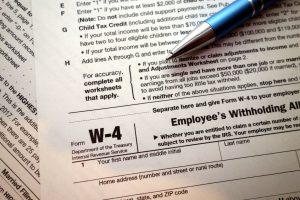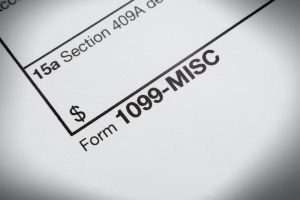Updated IRS rules offer guidance for deductible expenses which may have been murky as a result of the Tax Cuts and Jobs Act
 The rules being updated involve using optional standard mileage rates when figuring the deductible costs of operating an automobile for business, charitable, medical or moving expense purposes, among other issues.
The rules being updated involve using optional standard mileage rates when figuring the deductible costs of operating an automobile for business, charitable, medical or moving expense purposes, among other issues.
The full details are available in Revenue Procedure 2019-46 and Revenue Procedure 2019-48.
There are more succinct rules to substantiate the amount of an employee’s ordinary and necessary travel expenses reimbursed by an employer using the optional standard mileage rates. But know that you’re not required to use this method and that you may substantiate your actual allowable expenses, provided you maintain adequate records.
Miscellaneous itemized deductions clarified
The TCJA suspended the miscellaneous itemized deduction for most employees with unreimbursed business expenses, including the costs of operating an automobile for business purposes. However, self-employed individuals and certain employees, armed forces reservists, qualifying state or local government officials, educators, and performing artists may continue to deduct unreimbursed business expenses during the suspension.
The TCJA also suspended the deduction for moving expenses. However, this suspension doesn’t apply to a member of the armed forces on active duty who moves pursuant to a military order and incident to a permanent change of station.
Entertainment vs. food & beverage expenses
The IRS has also made it clear that the TCJA amended prior rules to disallow a deduction for expenses for entertainment, amusement or recreation paid for or incurred after Dec. 31, 2017. Otherwise allowable meal expenses remain deductible if the food and beverages are purchased separately from the entertainment, or if the cost of the food and beverages is stated separately from the cost of the entertainment.
More resources from KRS
KRSCPAS.com is accessible from your mobile device and is loaded with tax guides, blogs, and other resources to help you succeed. Check it out today!
| SHARE |

 In a recent statement, the IRS noted that most taxpayers are issued refunds by the IRS in fewer than 21 days. If yours takes a bit longer, here are six things that may be affecting the timing of your refund:
In a recent statement, the IRS noted that most taxpayers are issued refunds by the IRS in fewer than 21 days. If yours takes a bit longer, here are six things that may be affecting the timing of your refund: When should you revise your tax withholding?
When should you revise your tax withholding?

 The IRS recently issued guidance on the 20% tax deduction for Qualified Business Income (QBI) and rental real estate activity. Here’s what you need to know:
The IRS recently issued guidance on the 20% tax deduction for Qualified Business Income (QBI) and rental real estate activity. Here’s what you need to know:  The growing backlog of debt has proved too much for the agency, which continues to use four debt collection companies to round up outstanding payments from taxpayers who’ve been contacted numerous times and still haven’t coughed up any cash.
The growing backlog of debt has proved too much for the agency, which continues to use four debt collection companies to round up outstanding payments from taxpayers who’ve been contacted numerous times and still haven’t coughed up any cash. To start with, your deductions must exceed 7.5 percent of your adjusted gross income. And they have to fall into an IRS-approved category.
To start with, your deductions must exceed 7.5 percent of your adjusted gross income. And they have to fall into an IRS-approved category. With tax season right around the corner, it’s time to start thinking about closing your books out for the year and preparing all your tax documents.
With tax season right around the corner, it’s time to start thinking about closing your books out for the year and preparing all your tax documents. Even when you take the customer to court and you still don’t get your money, there’s a way to make lemonade from this lemon of a customer.
Even when you take the customer to court and you still don’t get your money, there’s a way to make lemonade from this lemon of a customer.